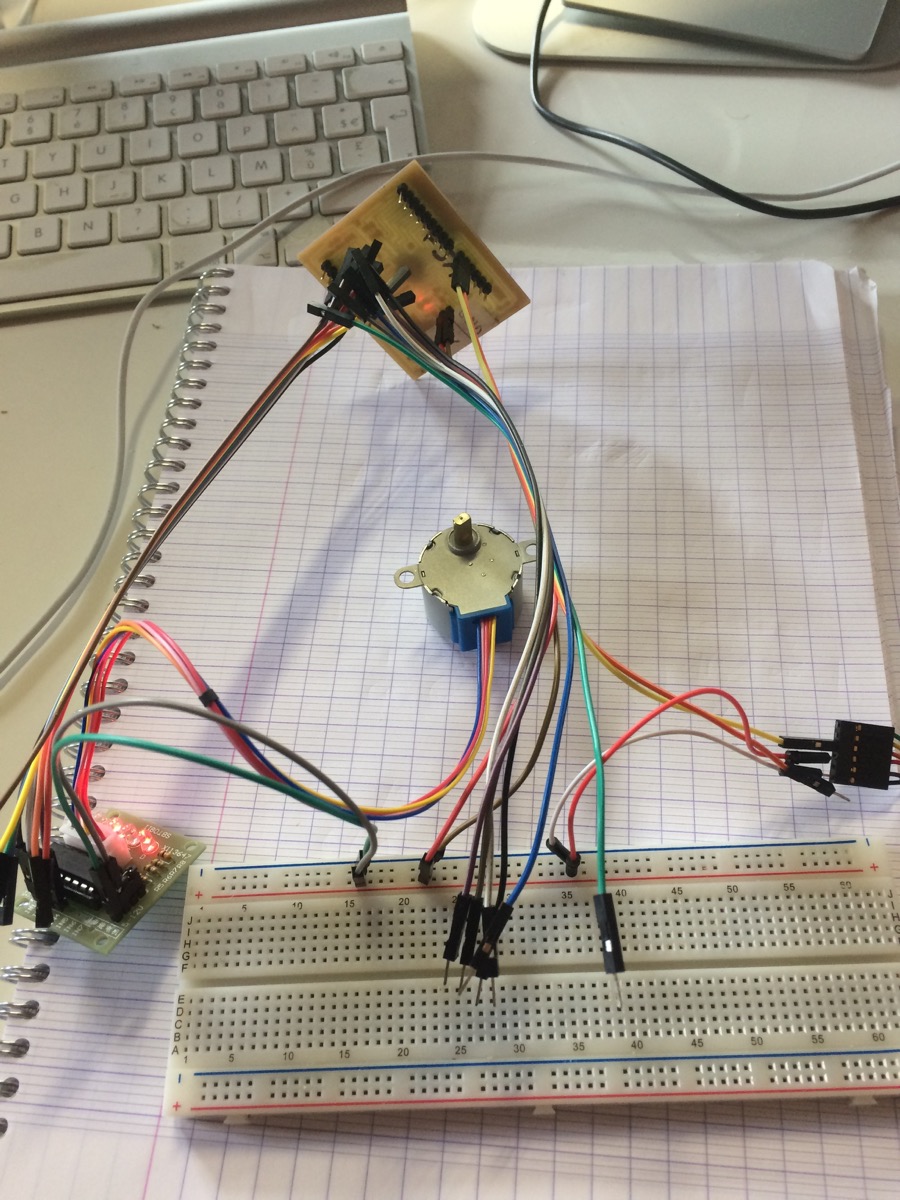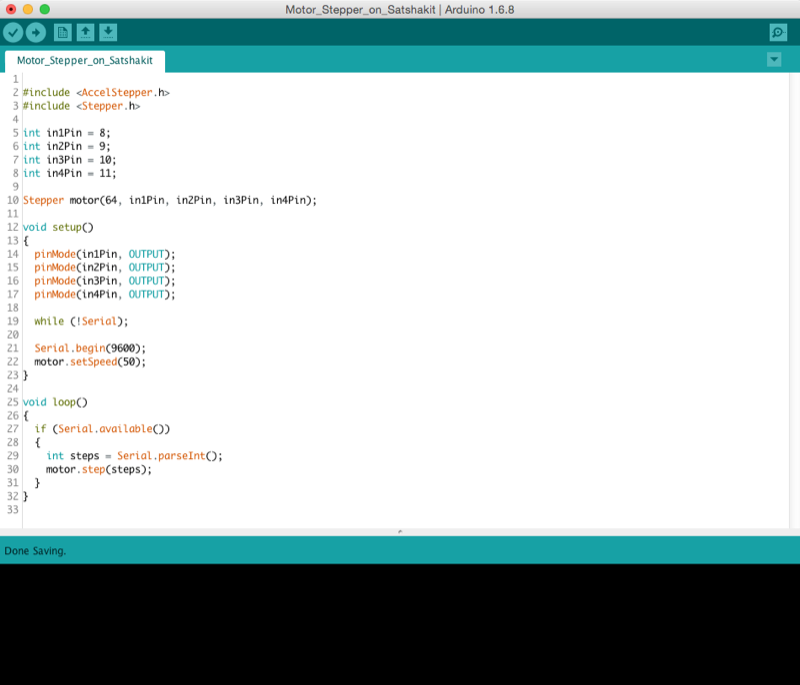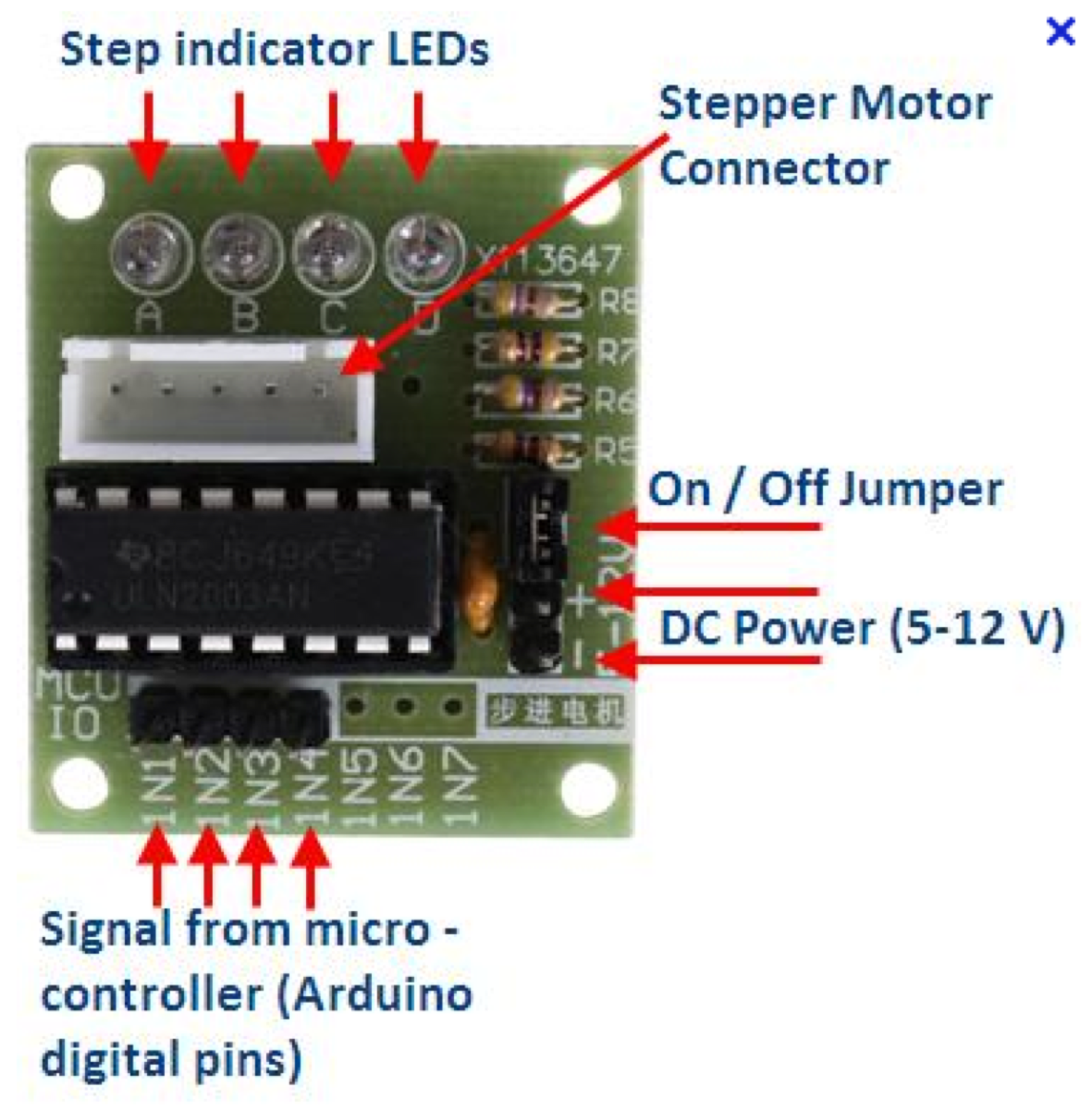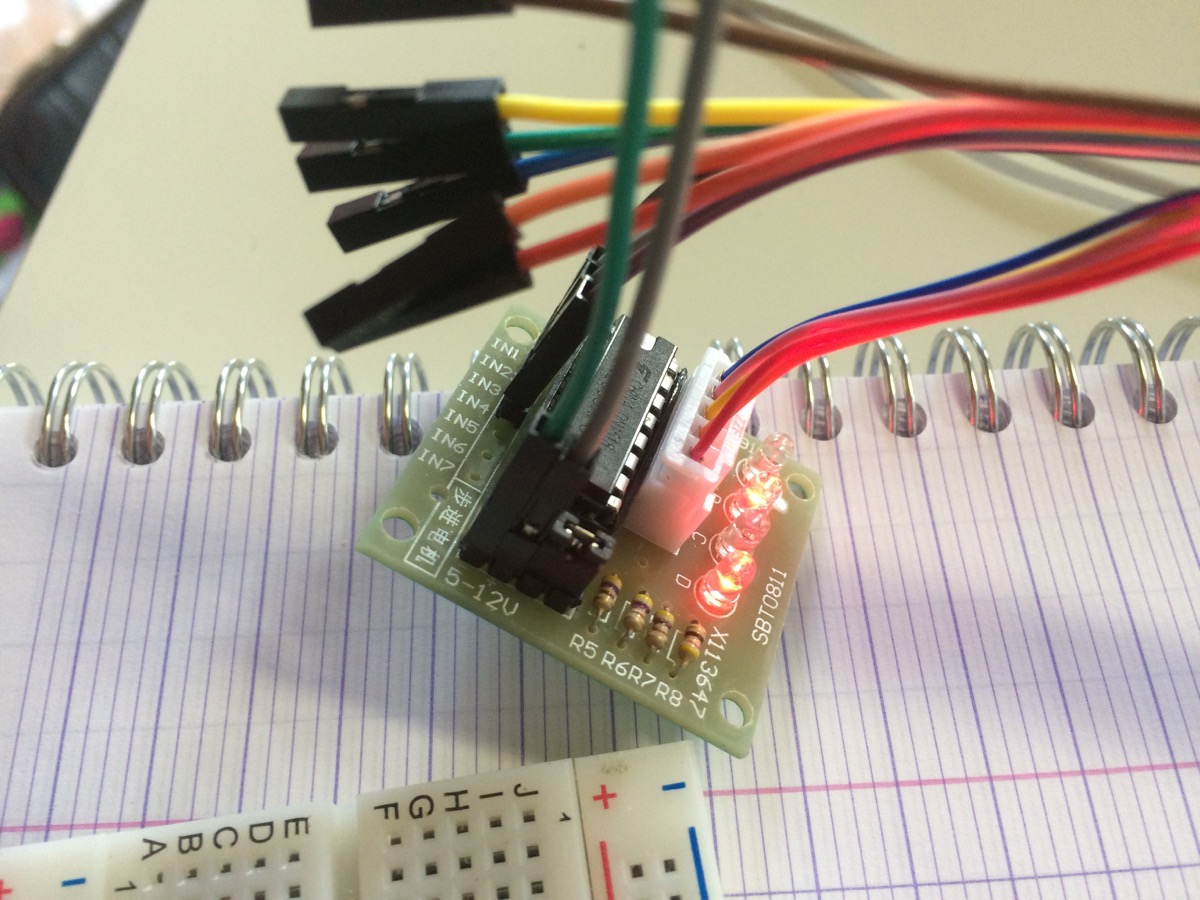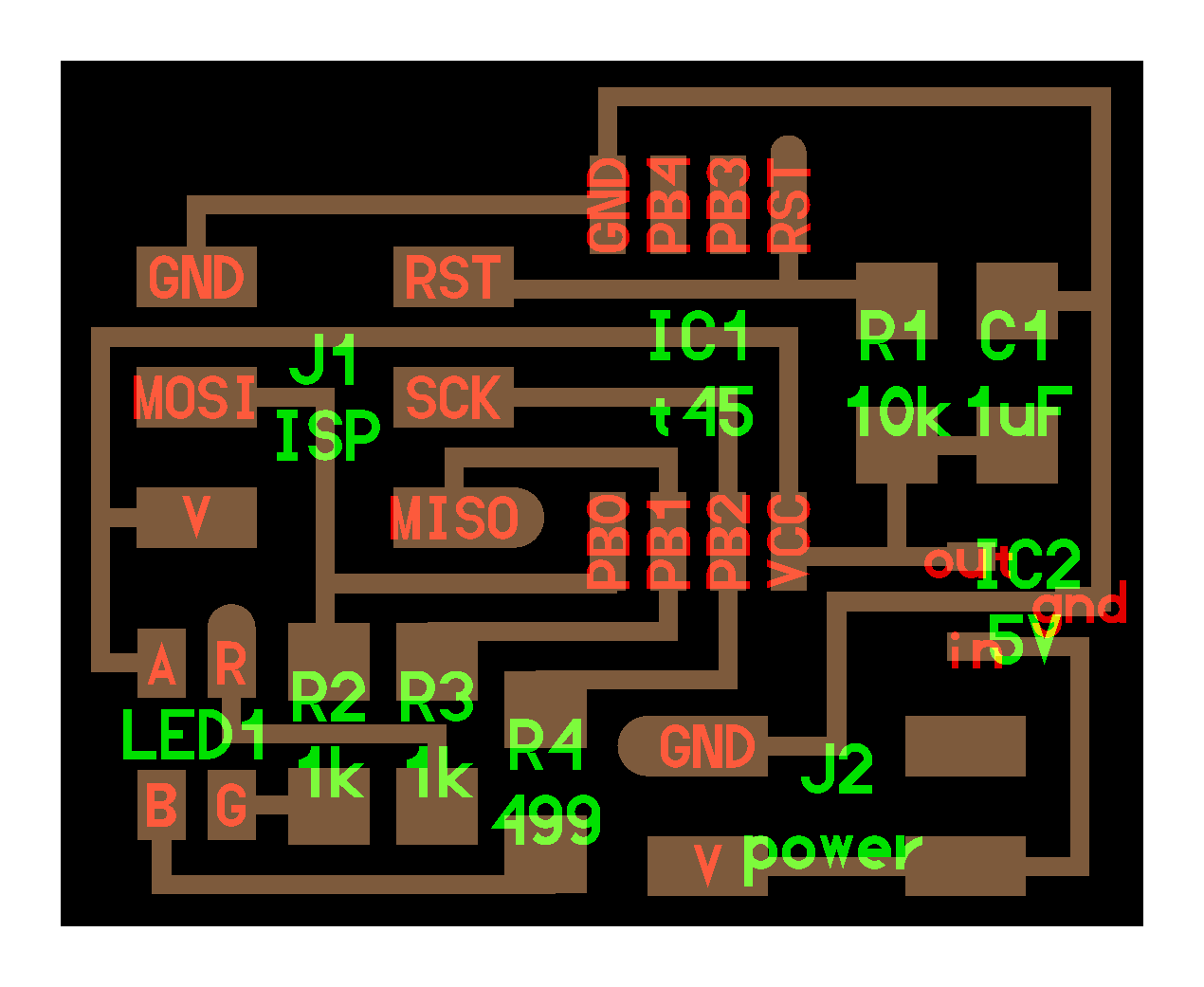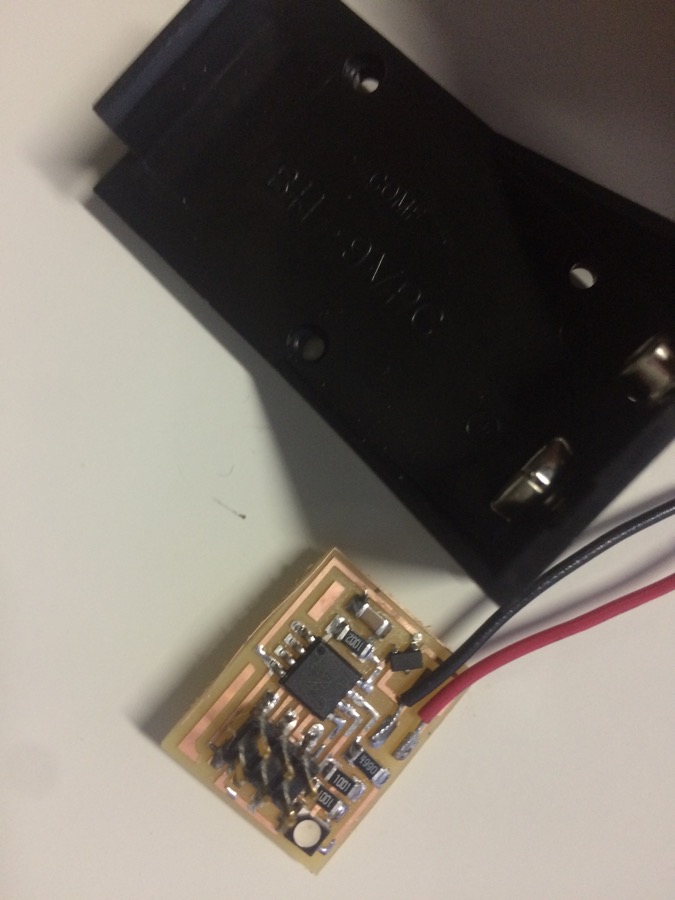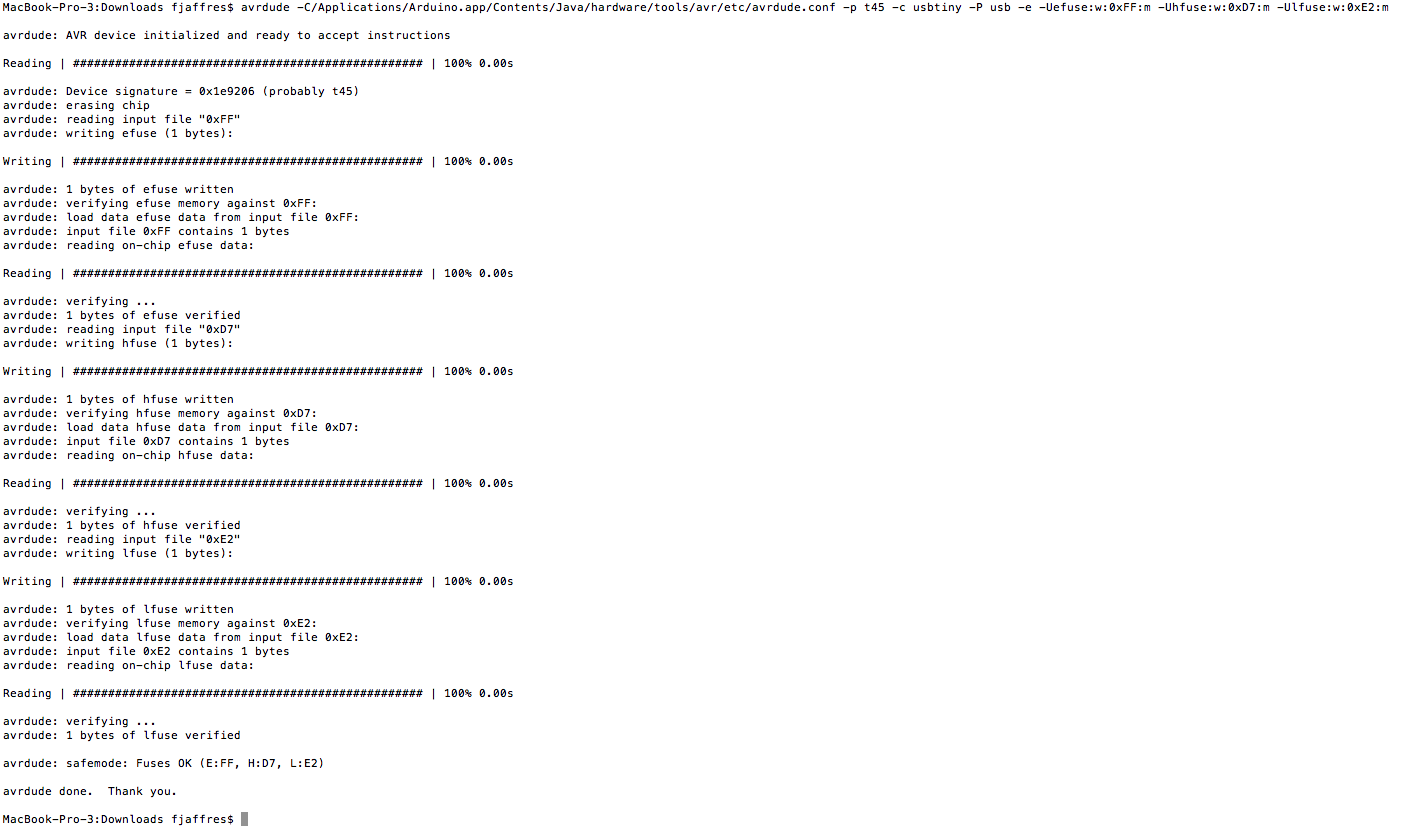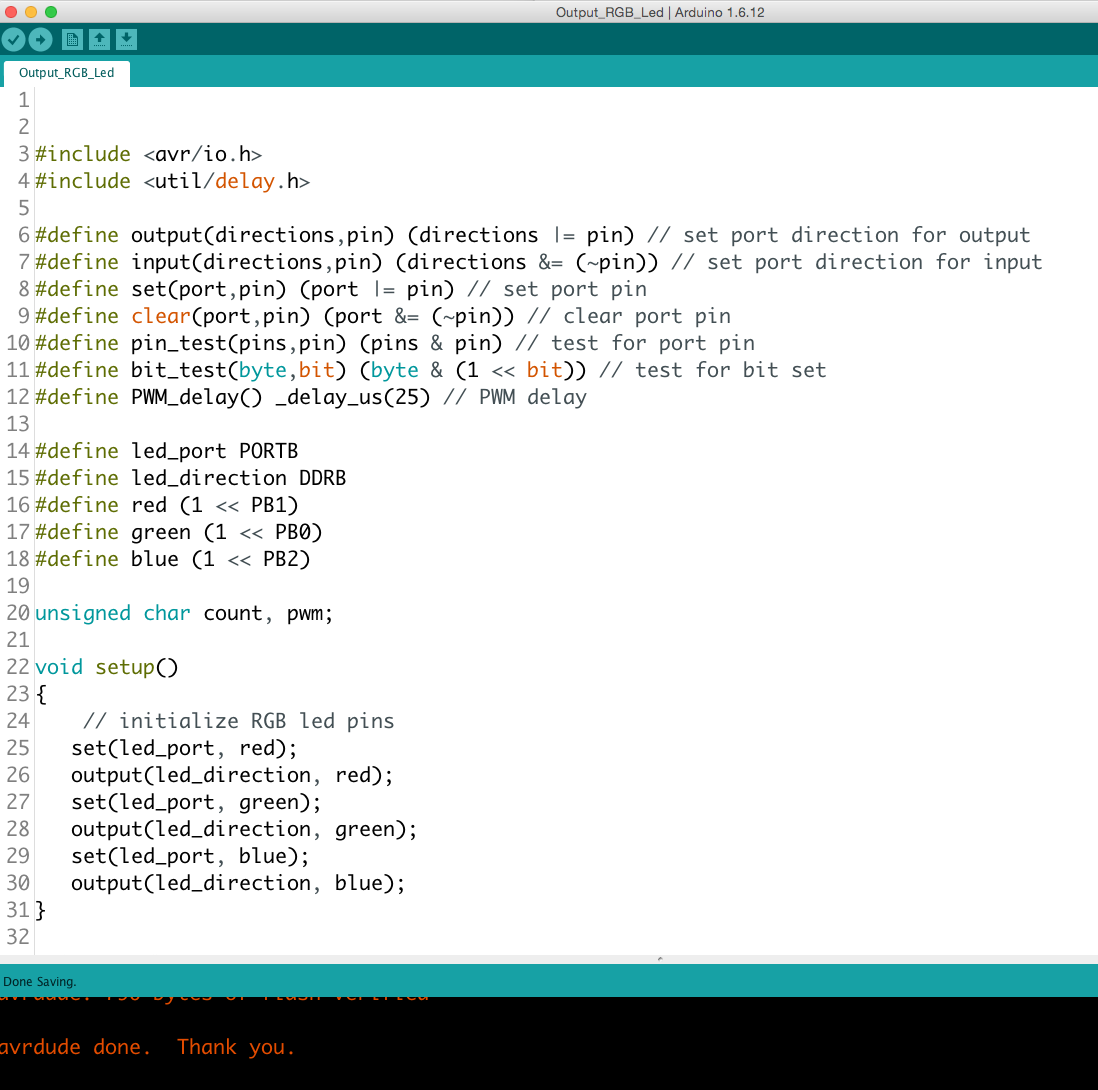WEEK 13
OUTPUT DEVICES
Assignment: Add an output device to a microcontroller board you've designedand programme it to do something
- a stepper motor as output device
Softwares: - ArduinoIDE, for the programming
DETAILS
Programming my Satshakitwith a Stepper Motor as an Output
I reused the same Satshakit as the one from the Input Devices assignment, and probably I will also use the Satshakit in my final project.
|
wire connections: 28BYJ-48 Stepper Motor to ULN2003 driver; ULN2003 driver to Satshakit; Power and Serial provided by FTDI cable
|
here is the programit simply pushes the number of steps to the motor via serial
|
|
schema of the ULN2003 driver
|
photo of the ULN2003 driver
|
Video
2ND ROUND
Doing more Output Devices
RGB led Niel's board
In order to improve my knowledge in output devices, I decided to redo the Niel's RGB led board. All outputs files and programs are above in the summary table at the top of the page.
|
Here is the Neil's original RGB led board. See the related .png and .rml files in the ouputs at the top of the page.
|
Here are my boards, after milling and solderingNotice the strange positionning of the LDO, it is because I didn't have the correct model, so I put it like this in order to respect pins gnd/VCCin/VCCout
|
|
Burning the board with my FabISP
|
Programming the boardUsing same library "avr/io" than for Embedding Programming and Input DevicesAlso using library "util/delay" to manage PWM
|
Video
Here is the program working! :-)
Programm pushed via FabISPand powered by FabISP
Video
Here is the program working! :-)
And now powered by external Battery (9V) via the 5V LDO integrated on the board
